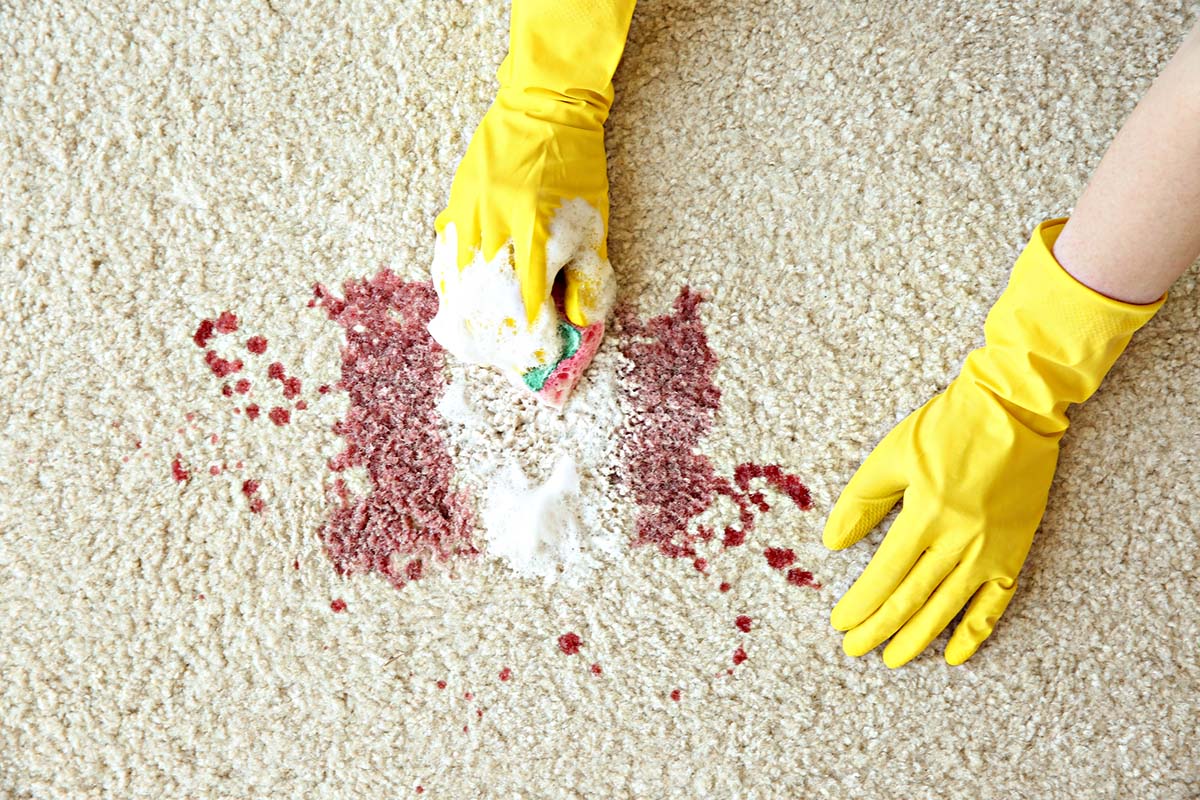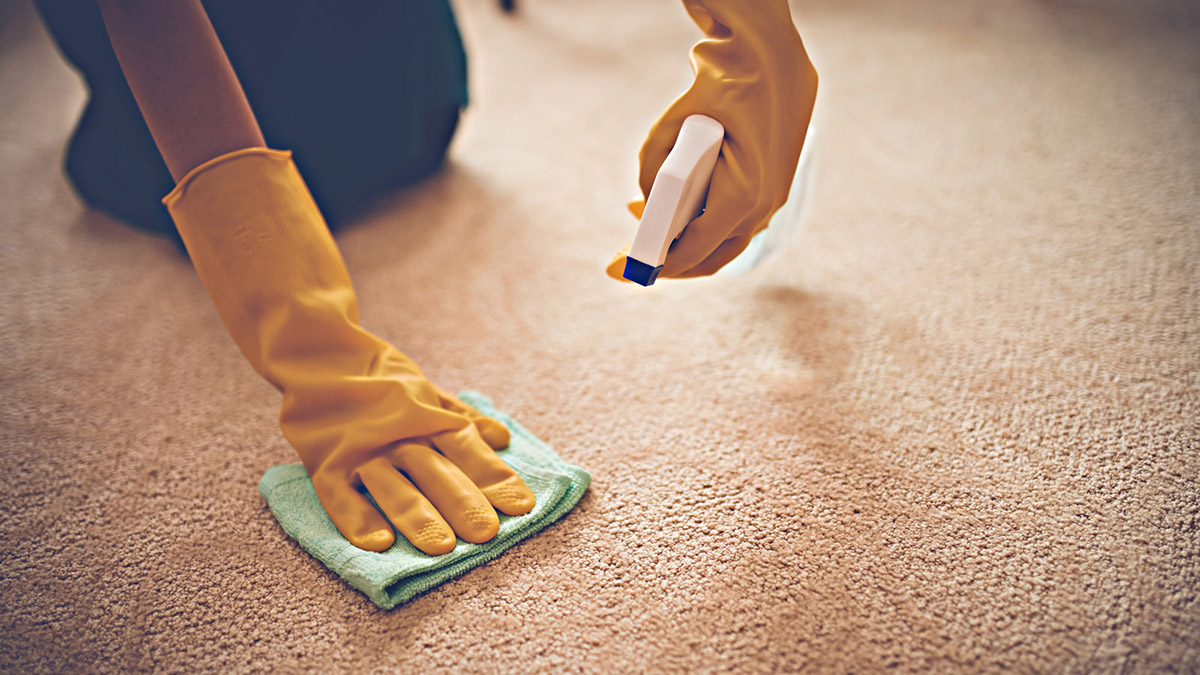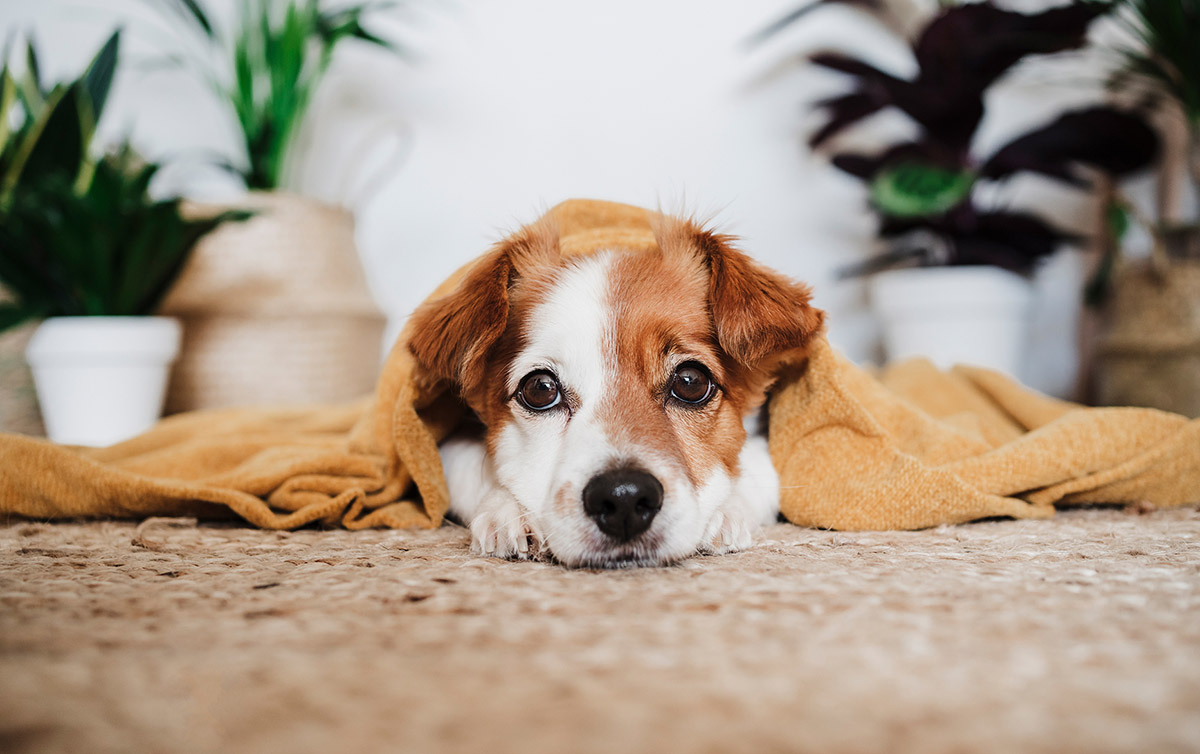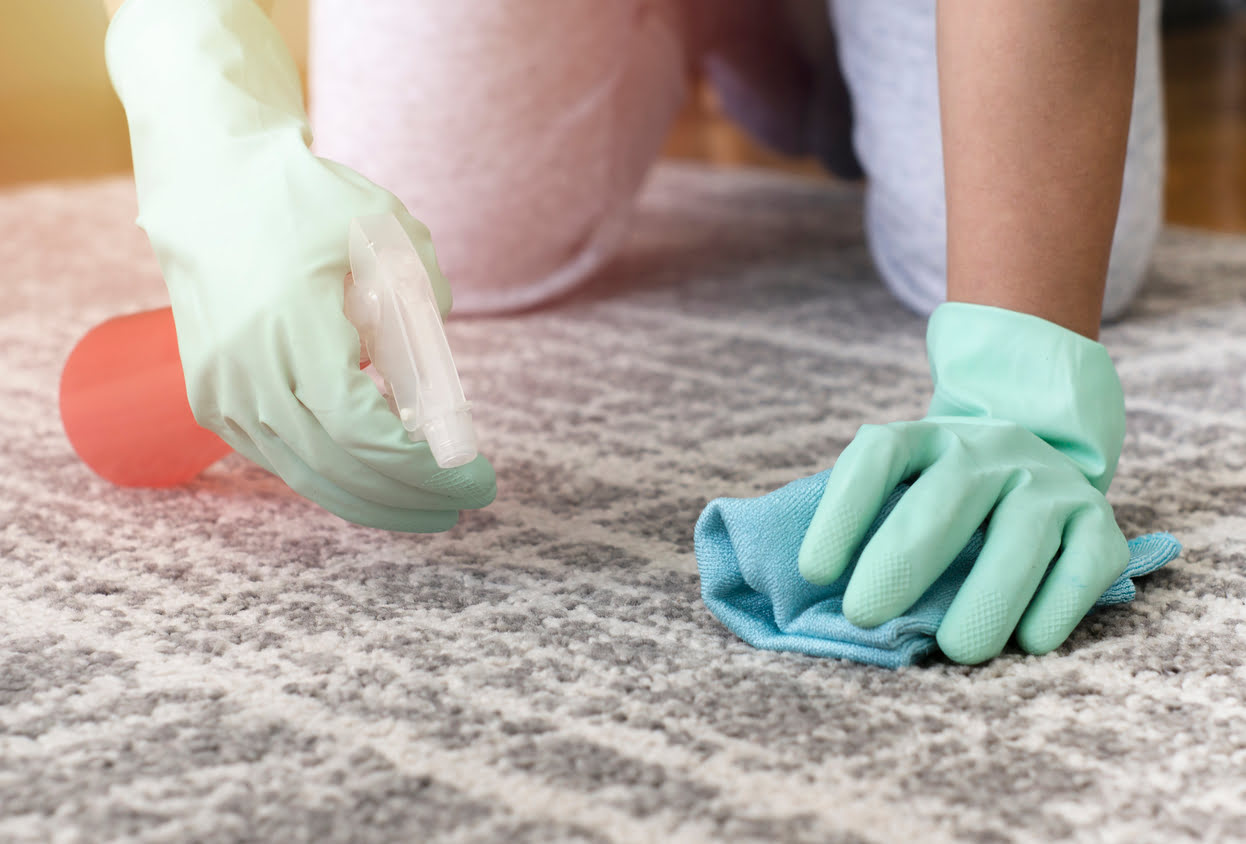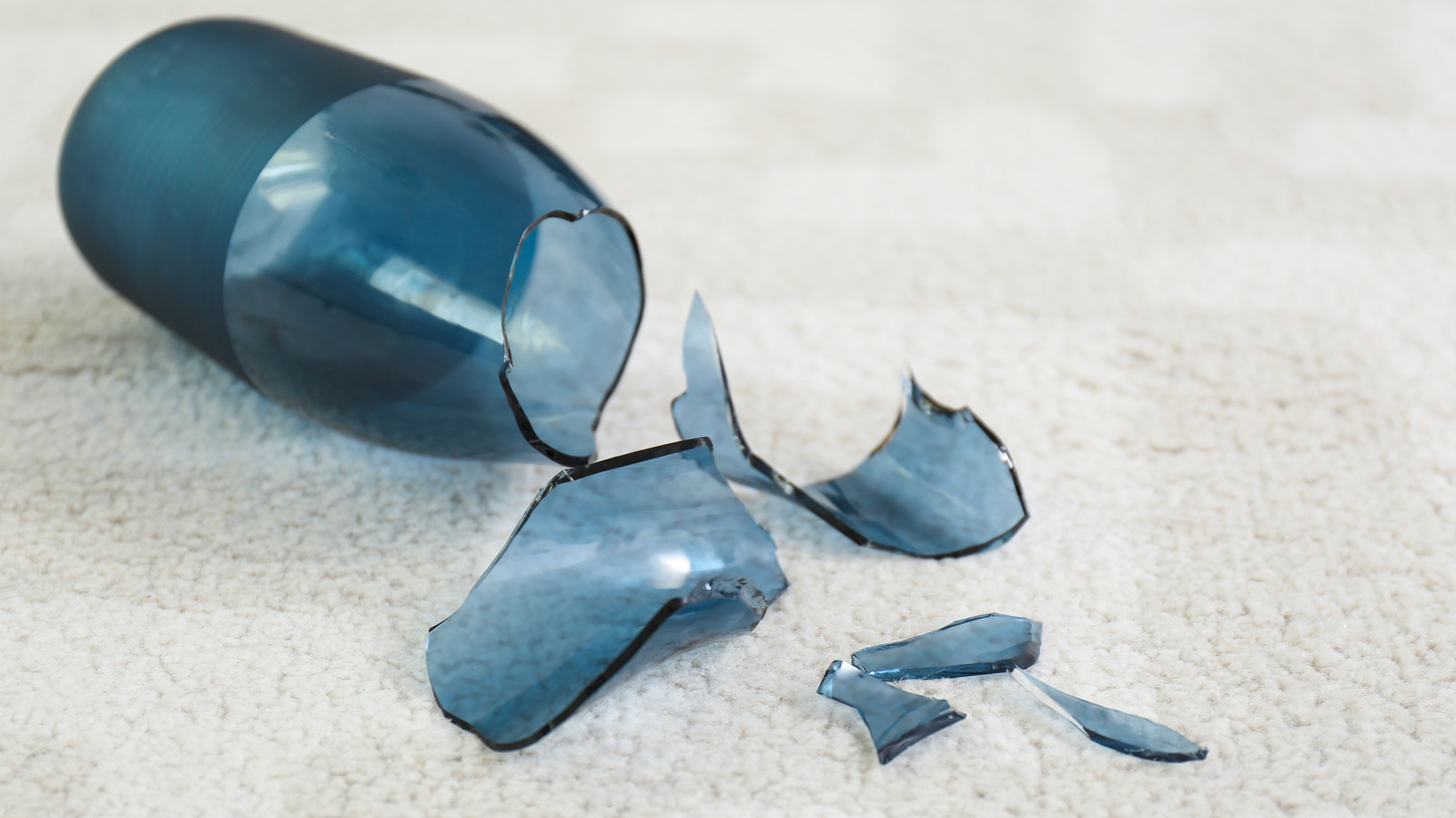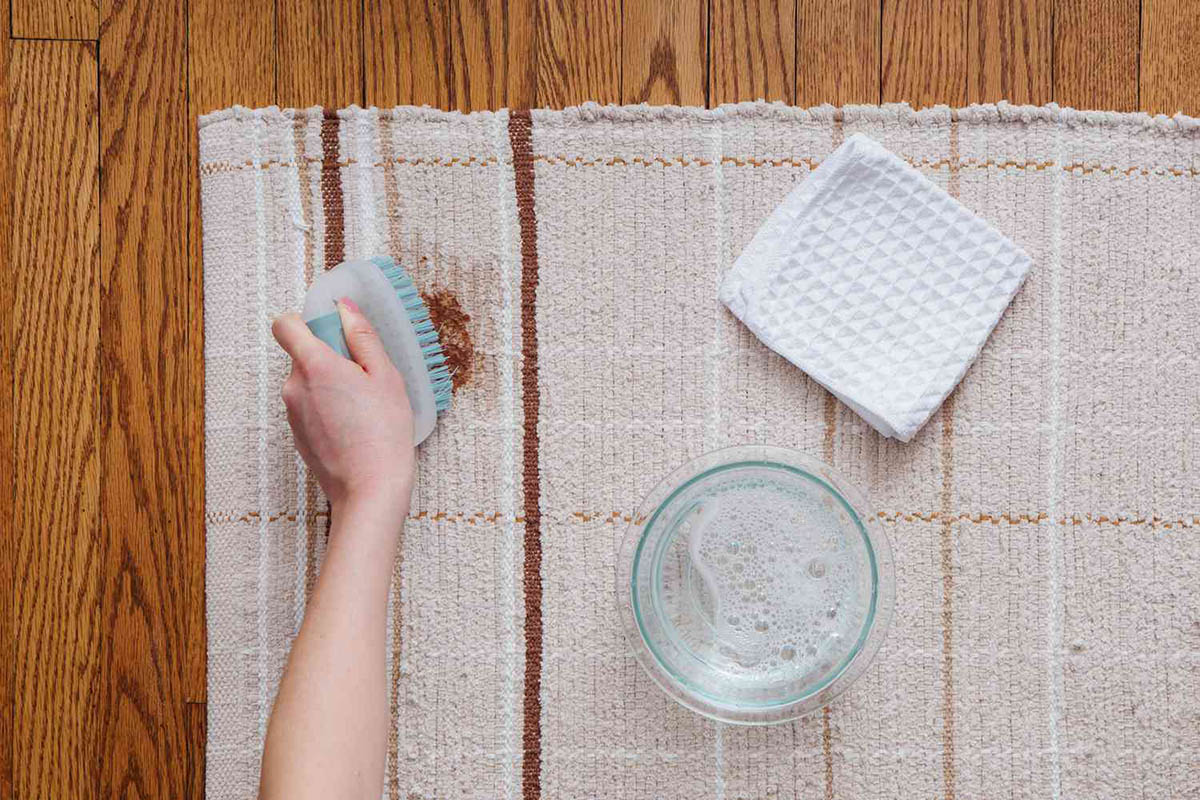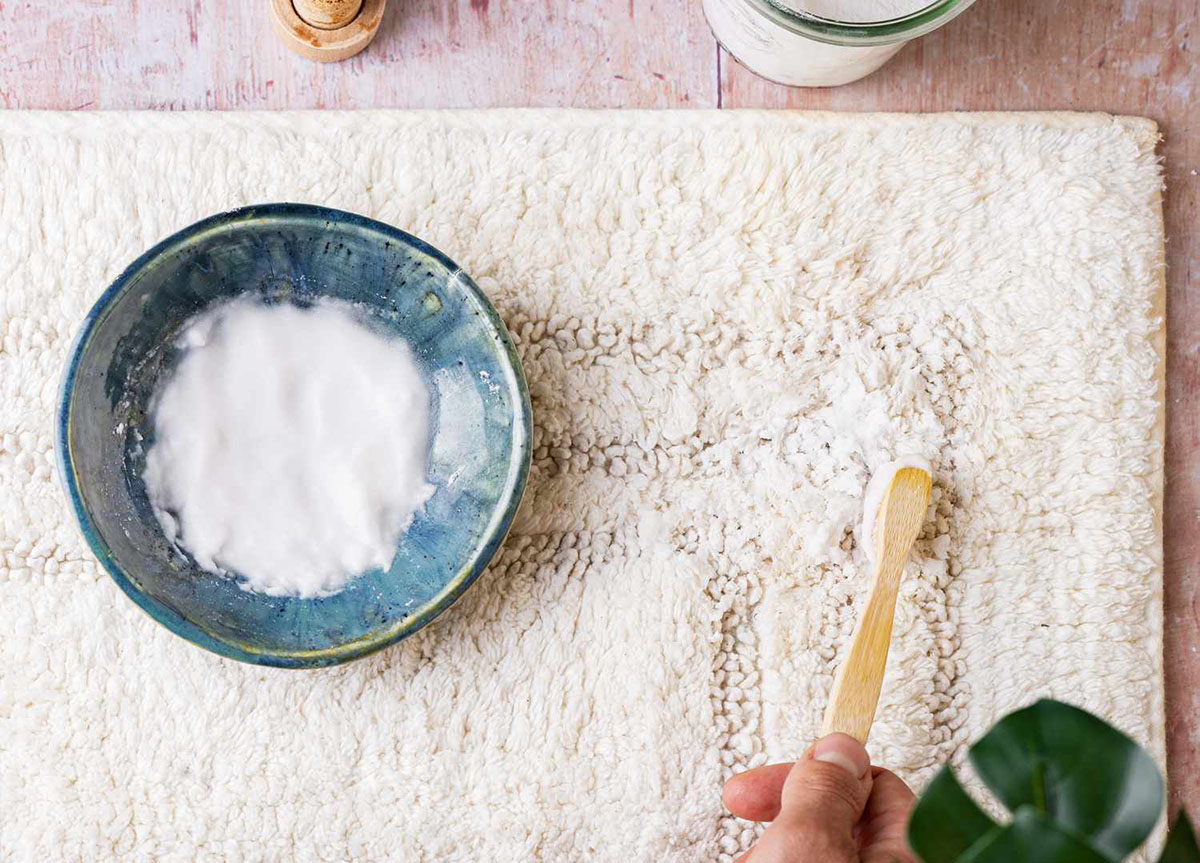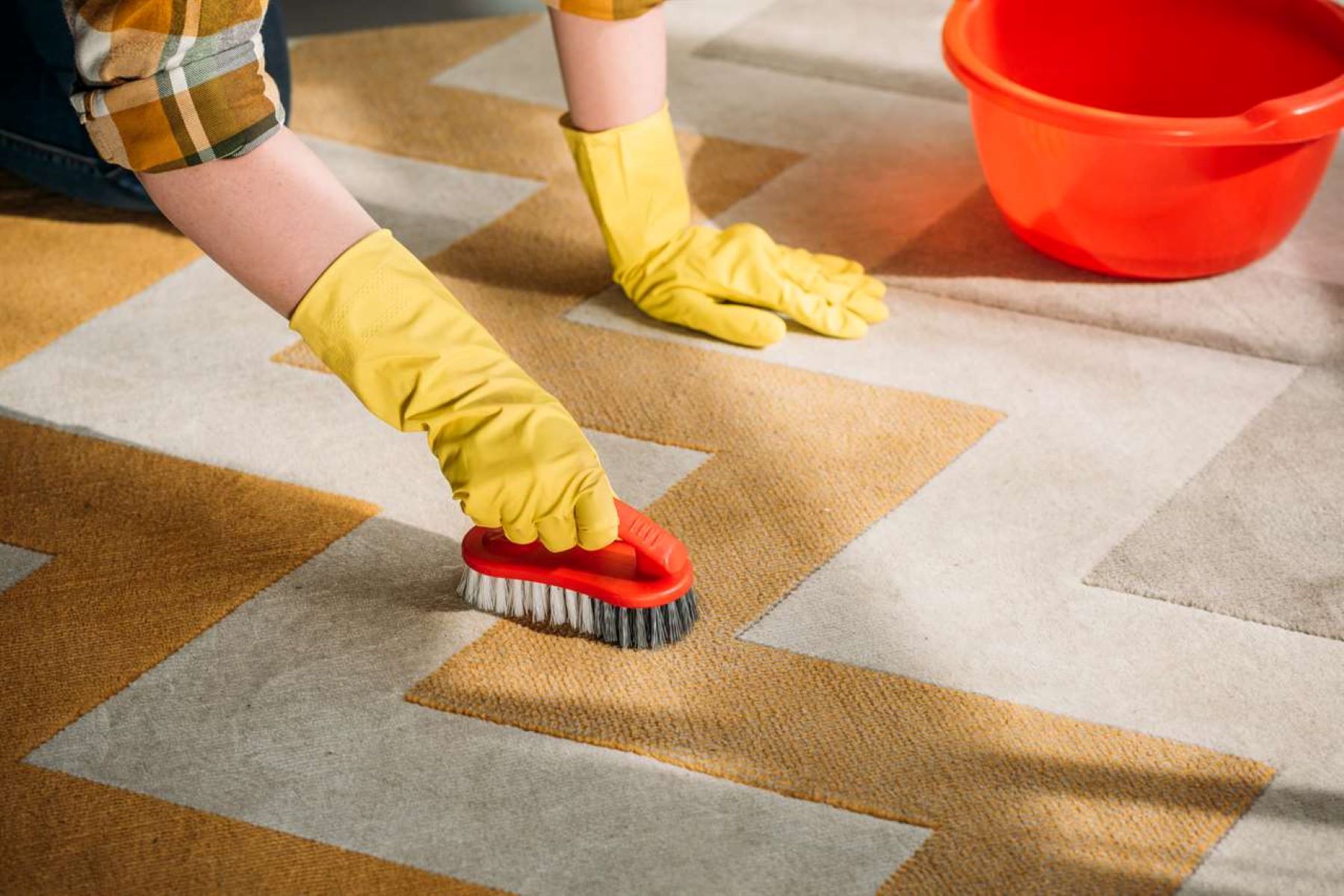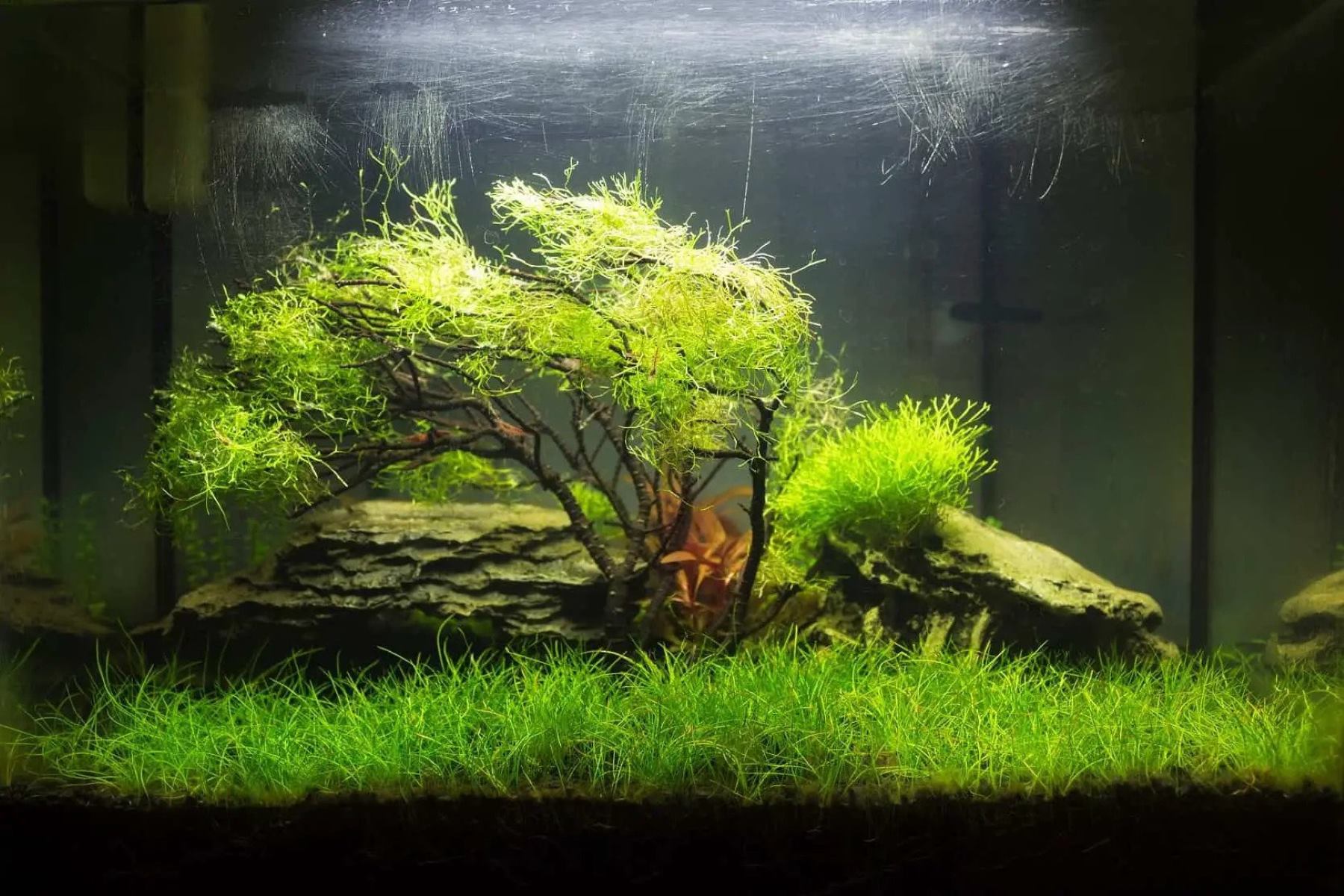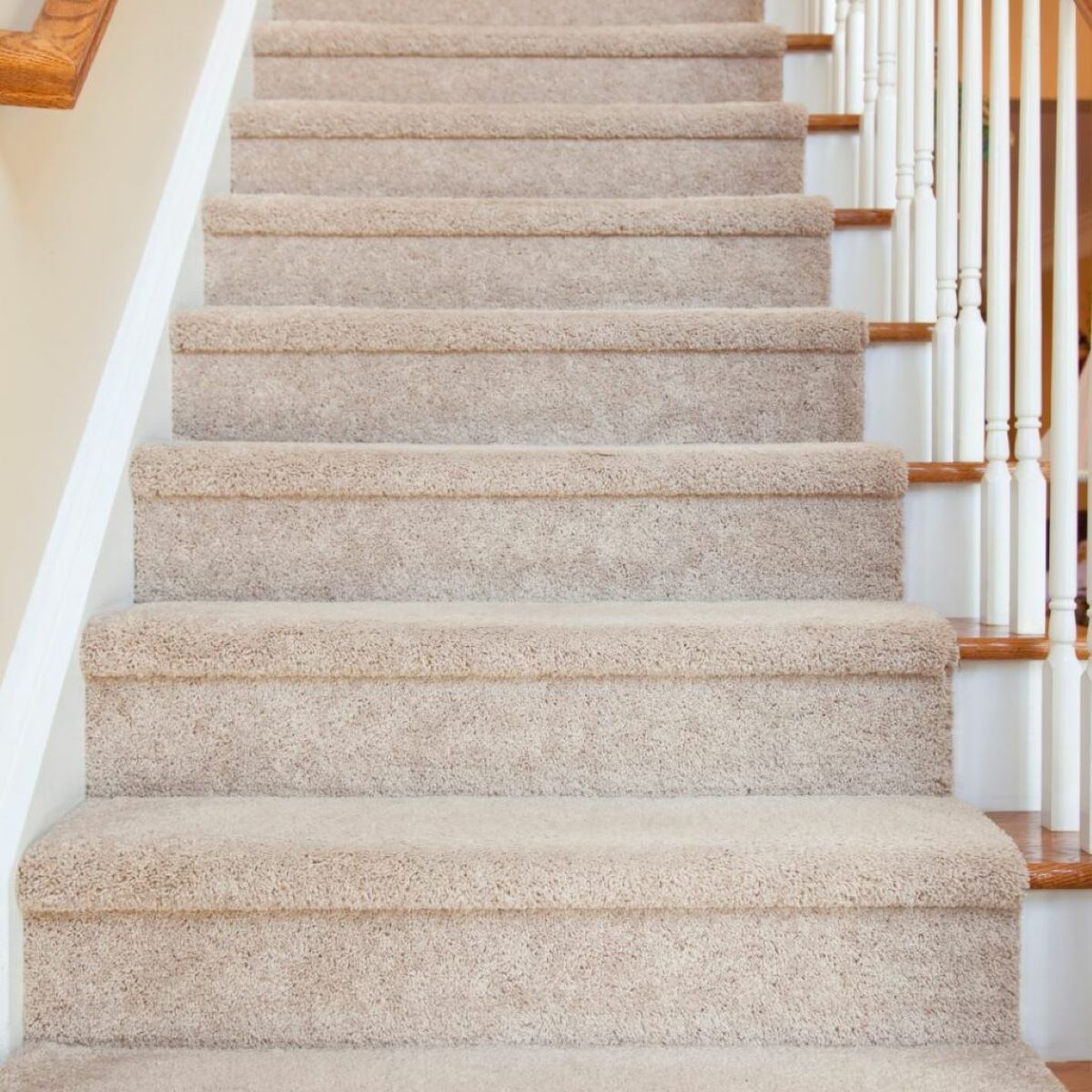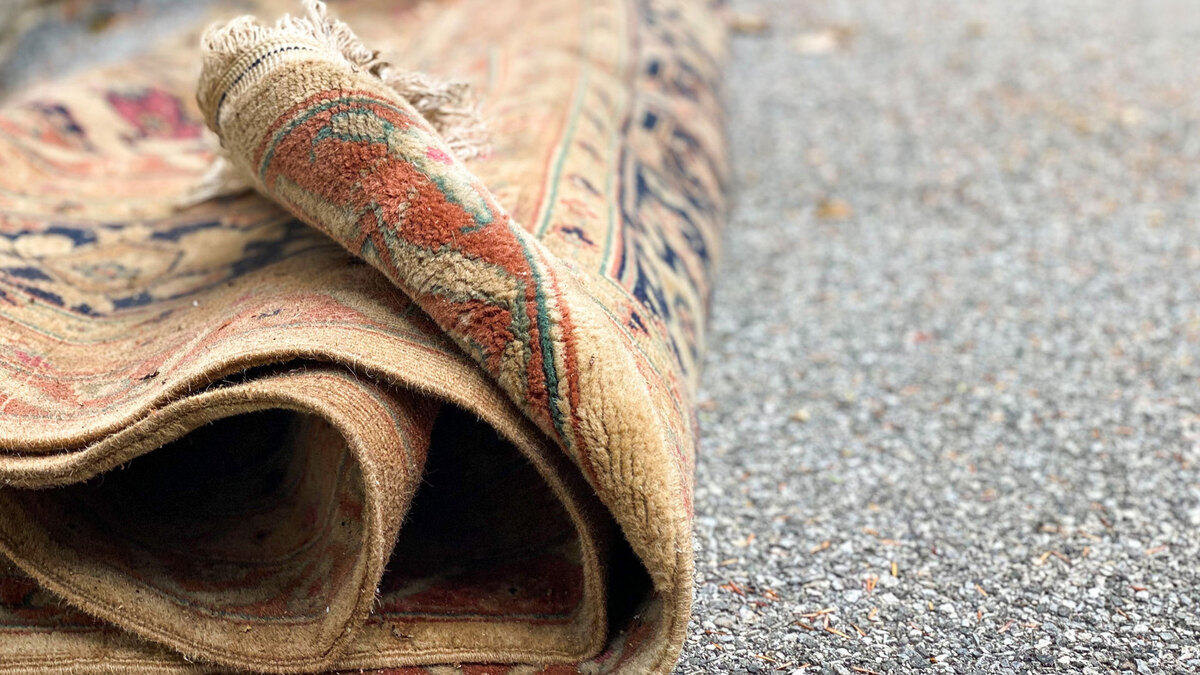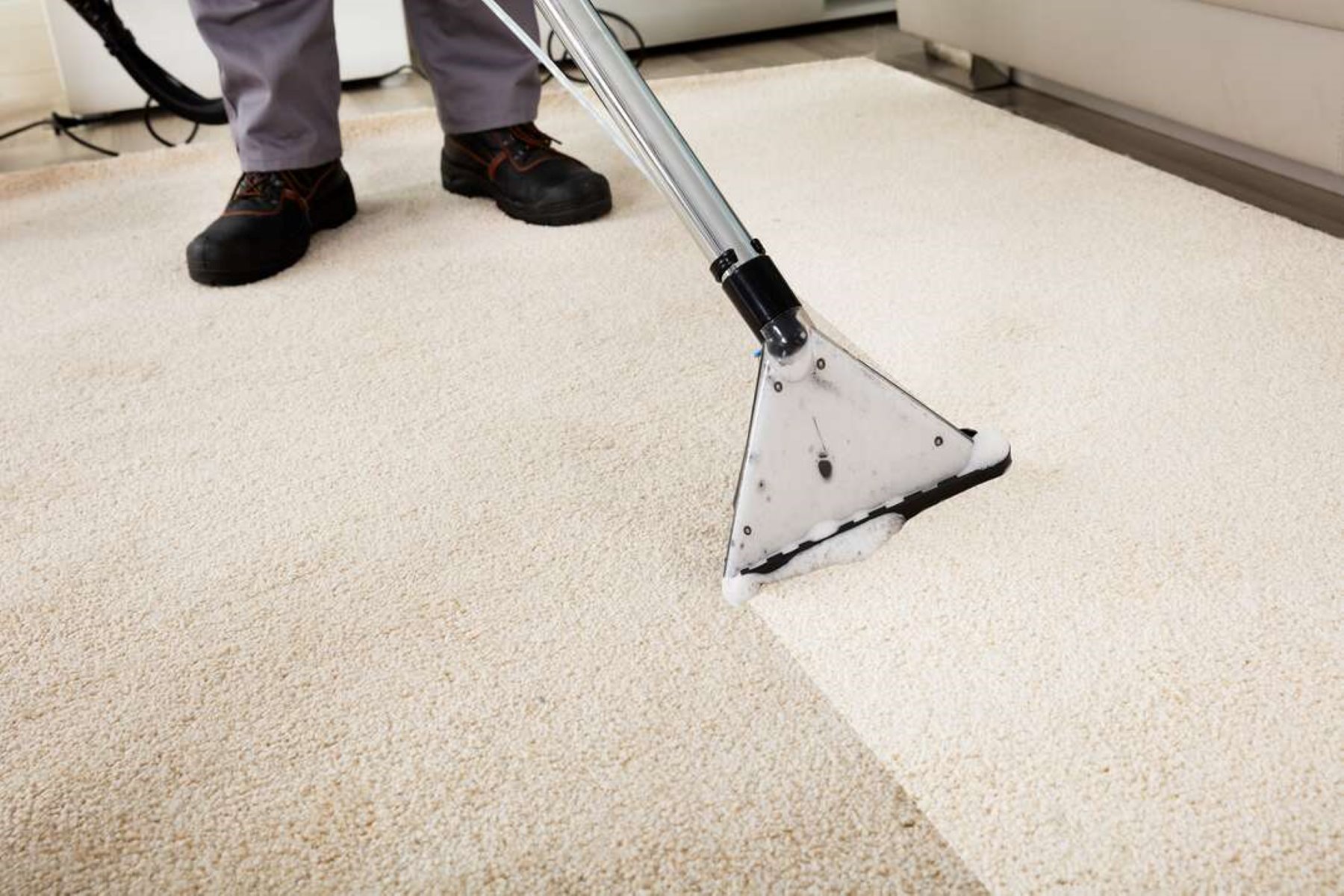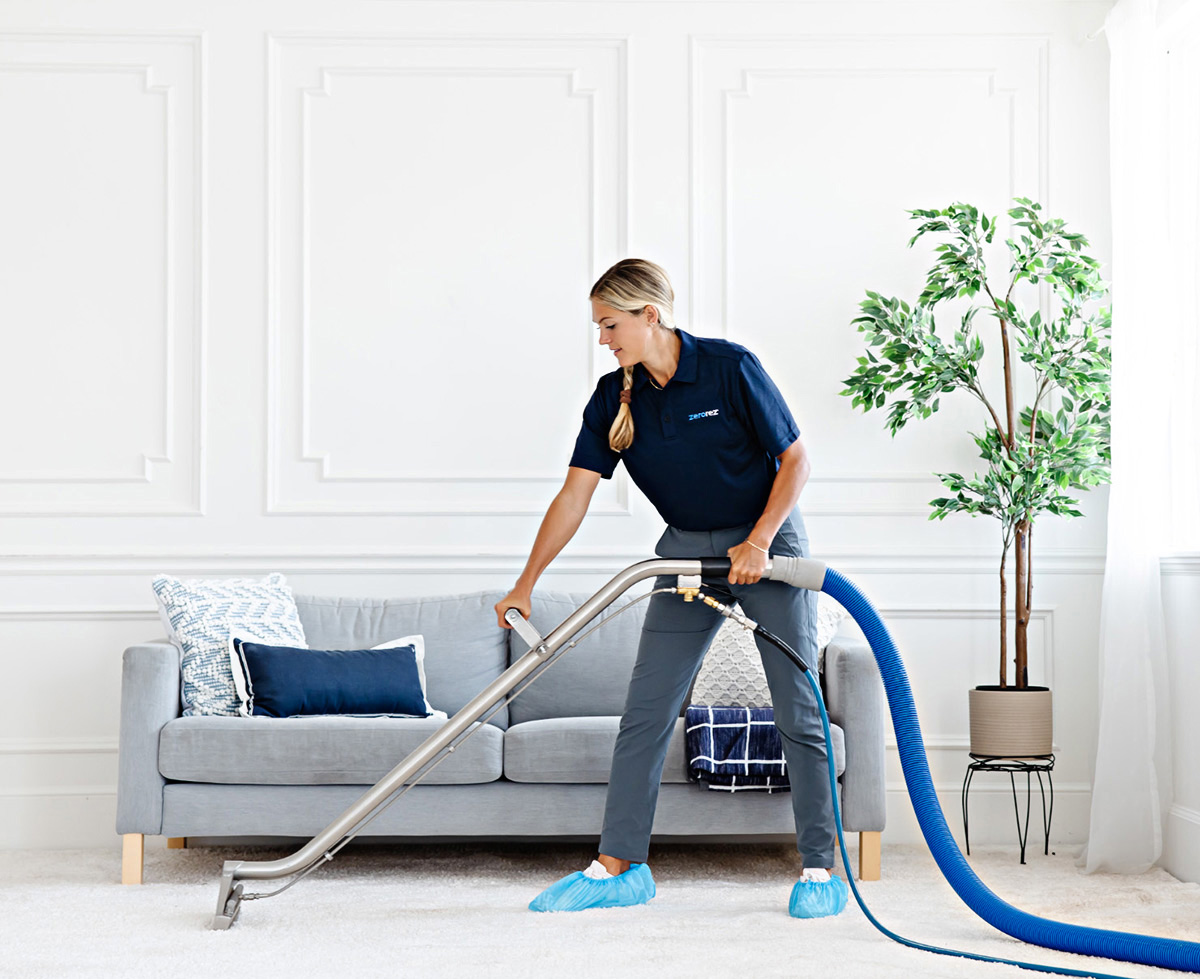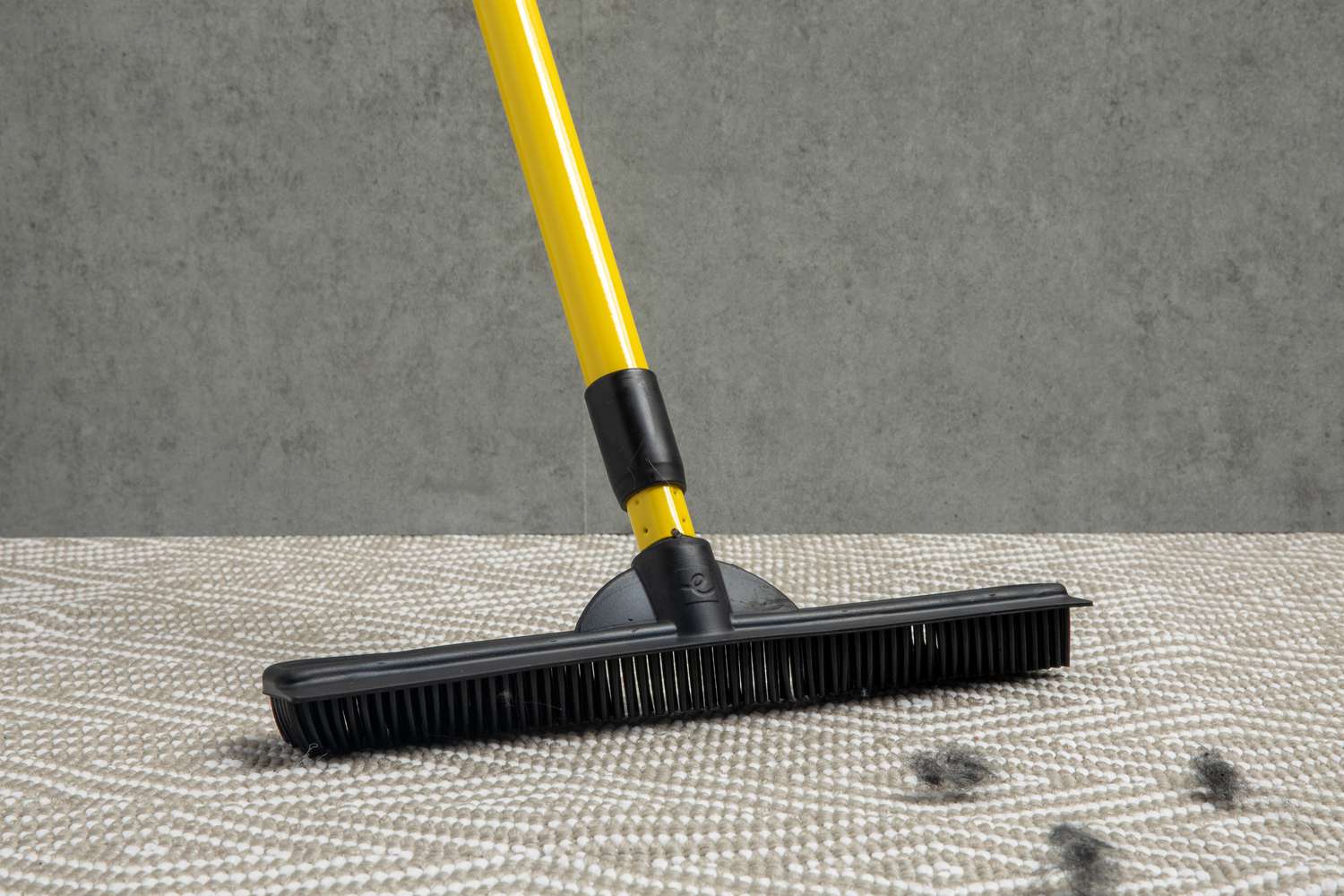

Articles
How To Clean Hair From A Carpet
Modified: January 9, 2024
Learn effective techniques and tips for removing hair from your carpet with our informative articles. Keep your carpet clean and hair-free!
(Many of the links in this article redirect to a specific reviewed product. Your purchase of these products through affiliate links helps to generate commission for Storables.com, at no extra cost. Learn more)
Introduction
Hair can be a stubborn and unsightly problem when it gets embedded in your carpet. Whether it’s your own hair, your pet’s hair, or hair from guests, it can be a challenge to remove. But fear not, with the right techniques and materials, you can successfully clean hair from your carpet and restore its original beauty. In this article, we will guide you through a step-by-step process to effectively remove hair from your carpet.
Before we begin, it’s important to note that regular vacuuming and maintenance can help prevent hair from accumulating in your carpet. However, if you’re dealing with a carpet that has already become a hairy mess, follow these steps to get your carpet looking fresh and clean again.
In the following sections, we will cover the materials you will need for the cleaning process, as well as a detailed step-by-step guide on how to best remove hair from your carpet.
Key Takeaways:
- Say goodbye to stubborn carpet hair with these step-by-step techniques and materials, leaving your carpet fresh and hair-free.
- Regular maintenance and proactive cleaning will keep your carpet looking its best, preventing future hair accumulation and maintaining a clean environment.
Read more: How To Pick Up Hair From A Carpet
Materials Needed
Before you start cleaning the hair from your carpet, it’s important to gather all the necessary materials to ensure an effective and efficient cleaning process. Here are the materials you will need:
- Lint roller or sticky tape: These will help in removing loose hair from the carpet surface.
- Vacuum cleaner: A high-quality vacuum cleaner with a brush attachment will be essential for thorough cleaning.
- Cleaning solution: Choose a carpet cleaner that is specifically designed to tackle pet hair or sticky residue. You can opt for a store-bought carpet cleaner or make your own solution using household items like white vinegar and water.
- Scrub brush: A soft-bristle brush will be helpful in scrubbing the carpet fibers gently without causing any damage.
- Microfiber cloth: This will be useful for blotting and drying the carpet.
- Freshwater: You will need access to clean water for rinsing the carpet and removing any cleaning solution residue.
- Fan or air circulation: To speed up the drying process, you can use a fan or ensure good air circulation in the room.
Make sure to have all these materials handy before you get started. Having everything you need in one place will help streamline the cleaning process and save you time and effort.
Step 1: Removing Loose Hair
The first step in cleaning hair from your carpet is to remove any loose hair that is resting on the surface. This will make it easier to tackle the remaining hair that is stuck in the carpet fibers. Here’s how to get started:
- Use a lint roller: Start by using a lint roller or sticky tape to pick up as much loose hair as possible. Gently roll the lint roller or press the sticky side of the tape against the carpet. As you do this, the sticky surface will attract and trap the hair.
- Brush the carpet surface: If you don’t have a lint roller, you can use a soft-bristle brush to loosen and collect the hair. Brush the carpet in one direction to gather the hair into a pile. Once you have a pile of hair, use your hands or a vacuum cleaner with a brush attachment to remove it.
- Repeat the process: Depending on the amount of hair in your carpet, you may need to repeat the lint roller or brushing process multiple times. Continue until you have removed the majority of loose hair from the surface.
By removing the loose hair first, you’ll make the subsequent steps more effective in tackling the hair that is embedded in the carpet. Once you’ve completed this step, you can move on to the next stage of the cleaning process.
Step 2: Vacuuming the Carpet
After removing the loose hair, the next step is to thoroughly vacuum the carpet to further loosen and lift any remaining hair. Here’s how to effectively vacuum your carpet:
- Select the right attachment: Attach a brush or upholstery attachment to your vacuum cleaner. This will help agitate the carpet fibers and loosen the hair.
- Start from the edges: Begin vacuuming from the edges of the room and work your way towards the center. This will ensure that you cover the entire carpet surface and remove as much hair as possible.
- Use overlapping strokes: Use slow and deliberate strokes, overlapping each section to ensure thorough cleaning. This will help pick up the hair that has been tangled or embedded in the carpet fibers.
- Pay attention to corners and crevices: Don’t forget to vacuum the corners and crevices of the room, as these are common areas where hair tends to accumulate. Use a crevice tool or attachment to reach these tight spaces.
- Change the vacuum bag or empty the canister: If your vacuum cleaner has a bag, make sure to check and replace it if it’s full. If you have a bagless vacuum cleaner, empty the canister to maximize its suction power.
Be thorough and take your time while vacuuming to ensure that you remove as much hair as possible. Repeat the vacuuming process multiple times if needed, especially if your carpet has significant hair buildup.
Vacuuming will help remove the majority of the hair from your carpet, setting the stage for the next steps in the cleaning process. Once you’ve completed this step, you can move on to applying a cleaning solution to tackle any remaining hair and residue.
Step 3: Applying a Cleaning Solution
Now that you have removed the loose hair and thoroughly vacuumed the carpet, it’s time to apply a cleaning solution to further break down any remaining hair and remove any stains or odors. Follow these steps to apply a cleaning solution to your carpet:
- Choose a suitable cleaning solution: Select a carpet cleaner that is specifically designed to tackle pet hair or sticky residue. You can find these cleaners at your local store or opt for a homemade solution using a mixture of white vinegar and water.
- Perform a patch test: Before applying the solution to the entire carpet, it’s important to perform a patch test in an inconspicuous area. Apply a small amount of the solution and let it sit for a few minutes. Check for any discoloration or damage to the carpet fibers.
- Apply the cleaning solution: If the patch test is successful, proceed to apply the cleaning solution to the affected areas of the carpet. Use a spray bottle or a clean cloth soaked in the solution to apply it evenly. Avoid saturating the carpet as excessive moisture can lead to mold growth.
- Allow the solution to penetrate: Allow the cleaning solution to sit on the carpet for the recommended amount of time specified on the product label. This will give it enough time to break down the hair and dissolve any residue or stains.
Applying a cleaning solution will help further loosen and dissolve the hair that is embedded in the carpet fibers. The solution will also help eliminate any unpleasant odors caused by the hair. Once you’ve completed this step, you can proceed to the next step: scrubbing the carpet to effectively remove the hair.
Use a vacuum with a brush attachment to gently lift and remove hair from the carpet. For stubborn hair, try using a rubber squeegee or a lint roller to lift the hair from the carpet fibers.
Read more: How To Clean Soot From A Carpet
Step 4: Scrubbing the Carpet
After allowing the cleaning solution to penetrate the carpet, it’s time to scrub the carpet to remove the loosened hair and any remaining residue. Follow these steps to effectively scrub your carpet:
- Prepare a scrubbing solution: Mix a small amount of carpet cleaner or dish soap with warm water in a bucket. Stir the solution to create a soapy mixture.
- Dip a soft-bristle brush into the solution: Dip a soft-bristle brush into the soapy solution. Make sure the bristles are saturated but not overly soaked.
- Gently scrub the carpet: Starting from one corner of the carpet, gently scrub the affected areas in a circular motion. Focus on areas with hair buildup or visible stains. Apply moderate pressure to effectively loosen the hair and lift any residue.
- Rinse the brush: As you scrub, the brush may collect hair and debris. Rinse the brush regularly in clean water to prevent the hair from transferring back onto the carpet.
- Work in small sections: Divide the carpet into small sections and scrub one section at a time. This will ensure thorough cleaning and prevent the soapy solution from drying out before you finish scrubbing.
- Blot the carpet: After scrubbing each section, use a clean microfiber cloth or towel to blot the area. This will remove the loosened hair and any excess moisture from the carpet. Repeat the process for each section of the carpet.
Scrubbing the carpet will help dislodge and remove the remaining hair and residue from the carpet fibers. Take your time and be gentle to avoid damaging the carpet. Once you’ve completed this step, you can move on to the next stage: removing any residual hair from the carpet.
Step 5: Removing Residual Hair
Even after scrubbing the carpet, there might still be some residual hair left behind. This step will focus on removing any remaining hair from the carpet fibers. Follow these steps to effectively remove residual hair:
- Use a vacuum cleaner: Use your vacuum cleaner with a brush attachment to go over the carpet once again. This will help pick up any loose hair that was loosened during the scrubbing process.
- Use a rubber or latex glove: Put on a rubber or latex glove and lightly dampen it with water. Run your gloved hand over the carpet in a circular motion. The dampness and the texture of the glove will help attract and lift any remaining hair.
- Try a rubber broom or squeegee: If you don’t have a rubber or latex glove, you can use a rubber broom or squeegee to collect the residual hair. Simply pull the broom or squeegee across the carpet, and the rubber bristles or edge will gather the hair.
- Use a sticky roller or tape: To target any stubborn hair that is still visible, you can use a sticky roller or adhesive tape. Press the roller or tape against the carpet surface and roll or press it to pick up the remaining hair.
- Inspect and repeat if necessary: After using these techniques, inspect the carpet for any remaining hair. If you notice any, repeat the appropriate method until you are satisfied with the results.
Removing residual hair is crucial for achieving a clean and hair-free carpet. By using a combination of vacuuming, rubber gloves or tools, and sticky rollers or tape, you can effectively remove any lingering hair from the carpet fibers. Once you’ve completed this step, you can move on to the final stages of the cleaning process: drying the carpet and adding finishing touches.
Step 6: Drying the Carpet
After removing the hair and cleaning the carpet, it’s important to ensure that it is thoroughly dried to prevent any moisture-related issues and to restore its original appearance. Follow these steps to effectively dry your carpet:
- Blot any excess moisture: Use a clean microfiber cloth or towel to blot any excess moisture from the carpet. Press the cloth onto the carpet surface and apply gentle pressure to absorb the water. Repeat this process until the carpet feels damp but not wet.
- Utilize air circulation: Open windows and doors to allow fresh air to circulate in the room. This will help facilitate the drying process. If possible, use fans or a dehumidifier to enhance airflow and speed up drying time.
- Avoid walking on the damp carpet: While waiting for the carpet to dry, avoid walking on it to prevent any dirt or debris from getting onto the damp fibers. This will also help prevent any damage or crushing of the carpet fibers.
- Consider using a hairdryer: For smaller areas or localized spots that are taking longer to dry, you can use a hairdryer set on a low heat setting to gently dry the carpet. Keep the dryer moving continuously and maintain a safe distance to prevent overheating or scorching the carpet.
- Check for moisture: Once you believe the carpet is dry, check for any residual moisture by placing a clean, dry paper towel or cloth onto the carpet surface. If there is no moisture transfer, the carpet is likely dry. Otherwise, continue the drying process until the carpet is completely dry.
Properly drying the carpet will not only restore its appearance but also prevent the growth of mold or mildew. It’s important to be patient during this step as rushing the drying process may lead to unsatisfactory results. Once you’ve ensured that the carpet is dry, you can move on to the final step of the cleaning process: adding the finishing touches.
Step 7: Finishing Touches
After cleaning and drying your carpet, the final step involves some finishing touches to ensure it looks its best. Follow these steps to add the finishing touches to your freshly cleaned carpet:
- Groom the carpet fibers: Use a carpet rake or a clean, soft-bristle brush to gently groom the carpet fibers. This will help restore their original texture and appearance.
- Inspect for any lingering hair or residue: Take a close look at your carpet to make sure there are no stray hairs or residue left behind. If you spot any, use the appropriate method to remove them, such as a sticky roller or tape.
- Apply a carpet freshener or deodorizer: If desired, you can sprinkle a carpet freshener or deodorizer over the carpet surface. This will leave your carpet smelling fresh and clean.
- Allow the freshener to sit: Leave the carpet freshener on the carpet for the recommended amount of time specified on the product label. This will allow it to effectively eliminate any odors and leave a pleasant scent.
- Vacuum once more: After the freshener has had time to work its magic, vacuum the carpet once again to remove the freshener and to fluff up the fibers.
By following these finishing touches, you can enhance the appearance and smell of your carpet, giving it a clean and fresh look. Take a step back and admire your handiwork, knowing that you have successfully removed hair from your carpet and restored its beauty.
Remember, regular maintenance and frequent vacuuming will help prevent further hair accumulation in your carpet. Stay proactive in keeping your carpet clean to maintain a fresh and hair-free environment in your home.
Read more: How To Clean Dirt From A Carpet
Conclusion
Cleaning hair from your carpet can be a challenging task, but with the right approach and materials, you can successfully remove hair and restore the carpet’s original beauty. By following the step-by-step guide provided in this article, you can effectively tackle hair buildup, whether it’s your own hair, pet hair, or hair from guests.
Starting with removing loose hair and thorough vacuuming, you’ll be able to remove the majority of hair from the carpet. Applying a cleaning solution and scrubbing the carpet will further loosen and dissolve the hair, while removing any stains or odors. Afterward, removing residual hair ensures that no stray strands are left behind. Finally, effectively drying the carpet and adding finishing touches will ensure a clean, fresh, and hair-free result.
Regular maintenance and preventative measures, such as frequent vacuuming, can help prevent hair accumulation and keep your carpet looking its best. By being proactive in tackling hair and maintaining cleanliness, you can enjoy a fresh and inviting environment in your home.
Remember, the materials and techniques mentioned in this article are general guidelines. It’s essential to consider the specific requirements of your carpet and choose appropriate cleaning solutions accordingly. Always test cleaning solutions in a small, inconspicuous area before applying them to the entire carpet.
With the knowledge and steps provided in this article, you are well-equipped to conquer the challenge of cleaning hair from your carpet. So roll up your sleeves, gather your materials, and get ready to restore the beauty of your carpet.
Frequently Asked Questions about How To Clean Hair From A Carpet
Was this page helpful?
At Storables.com, we guarantee accurate and reliable information. Our content, validated by Expert Board Contributors, is crafted following stringent Editorial Policies. We're committed to providing you with well-researched, expert-backed insights for all your informational needs.
